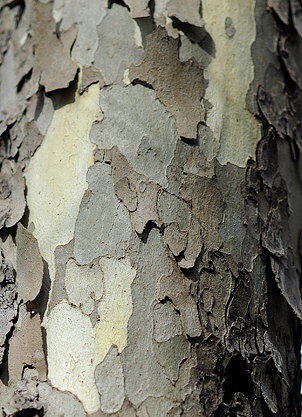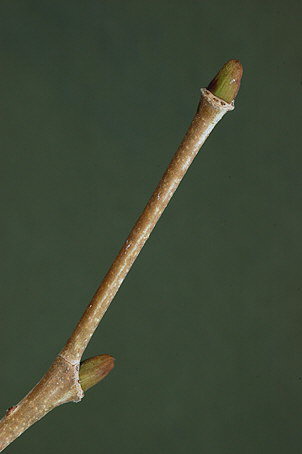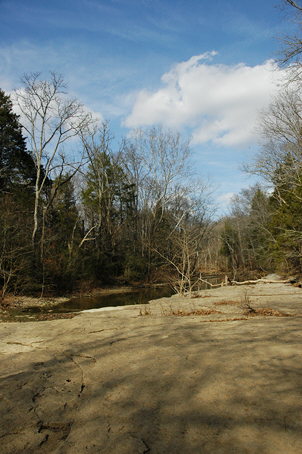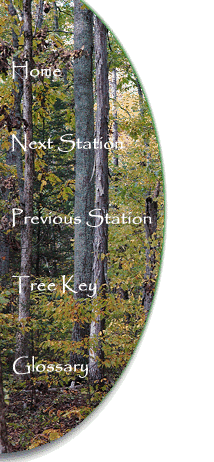| |
|
| |
 |
| |
American Sycamore Leaf |
Identification:
Look for the fallen leaves near the station tree. The leaves
are alternate,
simple and 5 inches to 8 inches long, green
and shiny above, whitish and hairy below.
Venation is
palmate.
The base of the petiole completely encloses the bud.
| |
|
 |
|
|
American Sycamore Bark |
The bark of the American Sycamore is
quite distinctive and beautiful in all seasons. The bark is
reddish-brown to gray when young, and thin and flaky. As the
outer bark flakes off, it exposes the white or greenish inner bark.
The twigs of the American Sycamore
are brown to orange-brown, smooth and shiny. The stipule
scar encloses the bud.
| |
|
| |
 |
| |
American Sycamore Twig |
The
lateral buds are 1/4 inch
through 3/8 inch long and smooth. There is one cap-like scale
which is surrounded by the leaf scar. The buds are completely
enclosed by the petiole until the leaf falls.
Other Uses
and Lore:
John James Audubon once wrote about observing
thousands of chimney swifts descending into a huge hollow sycamore
to use it as a roost. He returned early the following morning to
watch them exit. The swifts came pouring out in a black continuous
stream that lasted more than thirty minutes. Many
other species of wildlife use the cavities in these
trees, including many mammals.
Eastern screech owls roost and nest quite often in the cavities of
sycamores found along streams. The seeds were a favorite of the now
extinct Carolina parakeet.
The wood’s spiral grain makes it difficult to split,
and it is quite tough. It has been used for butcher’s blocks, cigar
boxes, shipping crates. It has also been used in musical
instruments and panels for Pullman cars in passenger trains.
The
Stones River
 |
| West Fork of
the Stones River |
While you're
here, stop for a moment and take a look at the Stones River below
Station Twelve. There are many more American Sycamores along
the river. During the winter months, check the parts of the
river banks with overhanging roots for foraging Winter Wrens.
These diminutive birds can be hard to spot, but sometimes come out
onto the bare rock along and lining the river. In late winter
and early spring you may even get a chance to hear one sing.
It's hard to believe such a long, beautiful and complex song
can come from such a small bird.
|

